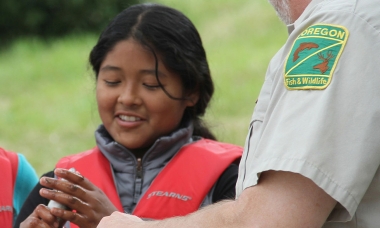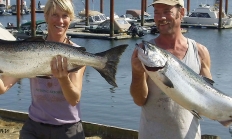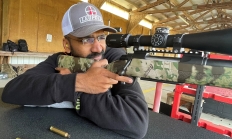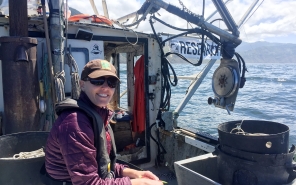
Search myodfw.com
Following droughts in the 1930s that affected most of North America, major conservation efforts, by both private and governmental entities, were enacted to reverse trends of degrading and disappearing wetlands. During this time period there was a major creation and expansion of federal wildlife refuges and state wildlife areas. As the concept of waterfowl flyway management was endorsed and developed, wildlife areas were acquired and managed as part of a larger plan focused on migratory waterfowl needs. LMWA was one of several wetland-focused wildlife areas established in Oregon. Ladd Marsh Wildlife Area was established in 1949, with primary objectives of


Statewide


Ripple effects from Redfish Rocks Marine Reserve: New economic analysis reveals job and income generation
NEWPORT, Ore. – New research from Oregon's south coast highlights the positive economic impact of science and tourism within Redfish Rocks Marine Reserve. The study quantifies the number of jobs supported and income generated by these activities, providing important data for the local Port Orford…


ODFW seeks a representative for the South Willamette position on the Salmon and Trout Advisory Committee. Deadline Aug 4.
SALEM, Ore. — The Oregon Department of Fish and Wildlife is seeking a new member to represent the South Willamette District on the Salmon and Trout Advisory Committee (STAC). Interested individuals are encouraged to apply by 5:00 p. m. on Aug. 4. ODFW is seeking interest from Oregonians who can…


Need to figure out controlled hunts, find a place to clam, learn how to fish or get directions to a wildlife area? We've got information on all that and more, straight from ODFW biologists and other accomplished hunters, anglers and wildlife watchers. Header image by Dave Budeau

The FRWA was created by a licensing agreement signed in 1957 and modified in 1982 and 2008, between the US Army Corps of Engineers and the Oregon Game Commission. This agreement authorized the state to develop, conserve, and manage all wildlife resources on 5,261 acres of land and water within the Fern Ridge Project. ODFW also acquired the 309 acre Coyote Creek South and 224 acre Coyote Creek Northeast units in 2013 and 2015, respectively. The wildlife area now totals 5,794 acres.
The variety of available shotgun shells can be dizzying, and there are more being introduced all the time. But taking into account the size of your shotgun and your intended target will help you narrow the choices to a more manageable number. Where to find shell information When you buy shells, the box they’re in will be labeled with the gauge, shell length, amount of shot inside the shell (in ounces), the size of shot and how many feet per second the load travels. Some of this information may also be printed on each shell to help you identify loose

OHRC Board to meet virtually on Sept. 3
CORVALLIS, Ore . — The Oregon Hatchery Research Center Board will meet virtually via Zoom on Wednesday, Sept. 3 from 9:00 a.m. to 11:00 a.m. In addition to the regularly scheduled items, the agenda includes a review of a proposal for use of the remaining OHRC Research Fund. The meeting is open to…

Wildlife themed interpretative series on Saturdays in July, August
CENTRAL POINT, Ore. – Learn how to spot and identify animal tracks, splash around in a stream to check out aquatic bugs, and play "survival of the fish-est." Join the Oregon Department of Fish and Wildlife, Jackson County Parks, and Rogue River Watershed Council for Wildlife Wisdom every Saturday…


OHRC Board to meet in Corvallis on June 17
CORVALLIS, Ore. — The Oregon Hatchery Research Center Board will meet in Corvallis on Tuesday, June 17 from 10:00 a.m. to 2:00 p.m. at the Oregon State University, Nash Hall Room 032, 2820 SW Campus Way. In addition to the regularly scheduled items, the agenda includes OHRC research updates, an…
